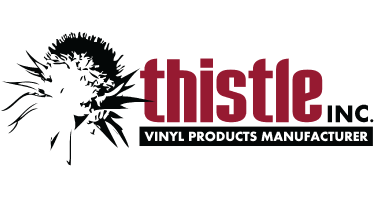
28 Mar Who’s Leading Us Anyways: Identifying and Developing Your Future Leaders
Change and progress are inevitable. Today we might argue that the pace and frequency at which change and progress are occurring has quickened considerably. Companies face complex issues in an increasingly connected world where missteps affect company value, reputation, and growth. Thus, today’s companies may require a different type of leader than they may have in the past. Today’s leaders must be responsible, resilient, nimble, forward-thinking decision-makers, who will help chart the course for future success.
CEOs identified developing next-generation leaders as their greatest concern, according to a report from The Conference Board, DDI, and EY. The HR leaders surveyed echoed a similar sentiment and further underscored the issue of bench strength, with just over a third of those surveyed rating their company’s bench as slightly strong, strong, or very strong. Companies need effective leaders to inspire and help execute its strategies and tactics for today and tomorrow’s success.
What characteristics should employers be looking for in their next-generation future leaders?
- Futurist mindset: Today’s constantly evolving business environment requires that leaders evolve with it. These leaders embrace change, demonstrate agility, and value learning. They dedicate time to learning new things whether it’s reading newsletters, participating in webinars, or listening to fellow employees, customers, and stakeholders to stay ahead, anticipate change, and discover new approaches to apply.
- Strategic vision: Future leaders take an interest in the direction the business is heading and have their own ideas. They “look up” to spot trends, connect with people internally and externally for data points, and ask tough questions. By doing so, a leader is then able to engage on a higher level and consequently communicate, shape, and frame the choices for future action.
- Flexibility: Leaders can flex into different roles as needed: decision maker, consensus builder, team member, sponsor, or teacher. They know when to delegate, and let others take the lead. They are able to read and adapt to the situation, determine the role they need to play, and act accordingly.
- Motivate others: The right leaders are like great conductors, blending talents and tempos to get the most from everyone and bring together individual contributions towards the overall goal. They communicate and convey the vision, strategy, and respective roles to build engagement and help employees understand their purpose in it.
- Accountability: Leaders can and do take accountability for their actions. Whether a strategy fails, a hiring decision does not work out, or their team requires resources, leaders understand that ultimately responsibility resides with them. They also hold team members accountable for performance and share the credit where it’s deserved.
- Resilience: Leaders know they will not always get it right the first time. They make mistakes and move on but continue to push and ask the questions to move past the status quo.
- Ethical decision-making: In today’s 24-hour news cycle, leaders face increased scrutiny. Top leaders must be ethical, honest, and acknowledge and rectify mistakes.
- High emotional intelligence: Leaders are self-aware, regulate their emotions and reactions, are motivated and empathetic and possess social skills.
Noticeably absent from this list are the words: expertise, results-oriented, accomplishments, multi-tasking, and cultural fit. One cannot confound leaders with managers or top performers. Each has a role, but those roles are not synonymous or interchangeable. Consequently, the characteristics for each of these is different. A Harvard Business Review article, notes that 42% of high-potential employees programs (HIPO) are actually below average in leadership effectiveness. These employees possess several valuable skills, but these skills do not translate to effective leadership. In looking for next-generation leaders, companies are seeking the capability to lead the organization to the next level and towards long-term future success and not simply results.
The good news for CEOs and HR? Leaders are made, they are not born. Companies can cast a wider net for talent to include people who would not typically be included in HIPO programs. They then can and should invest in their development to shore up leadership deficiencies. Formalized mentoring programs are under-utilized and have great organizational benefits ranging from lower turnover to retaining organizational knowledge to further leadership development. Pinpoint your current top leaders and assign them with a mentee. It benefits not only the mentee but also your current leader.
Recalibrate the metrics used to measure performance and reinforce a culture that values traits of next-generation leaders. Instead of focusing on individual efforts, what employees “put in,” companies should emphasize more outcome-based efforts. Use analytics to not just check metrics on performance but gather and develop insights into trends or potential issues.
In addition, give your top talent opportunities that enable them to grow, learn, and fail. Recognize their successes in unique, individual ways, and provide them with feedback regarding what they are doing well and where they may be lacking.
The future is here. Companies need next-generation leaders with a blend of talents to both inspire performance and execute on company strategies and objectives. To do so, companies need to be clear on the differences and roles their leaders, managers, and top contributors play in the organization. By looking beyond the HIPO pool of talent, companies can ensure they find the right characteristics for their next-generation leaders. Development and recalibration of internal programs and metrics can help companies make and shape their future leaders and help them create a sustainable pipeline of leaders ready to step in when the opportunity arises.
